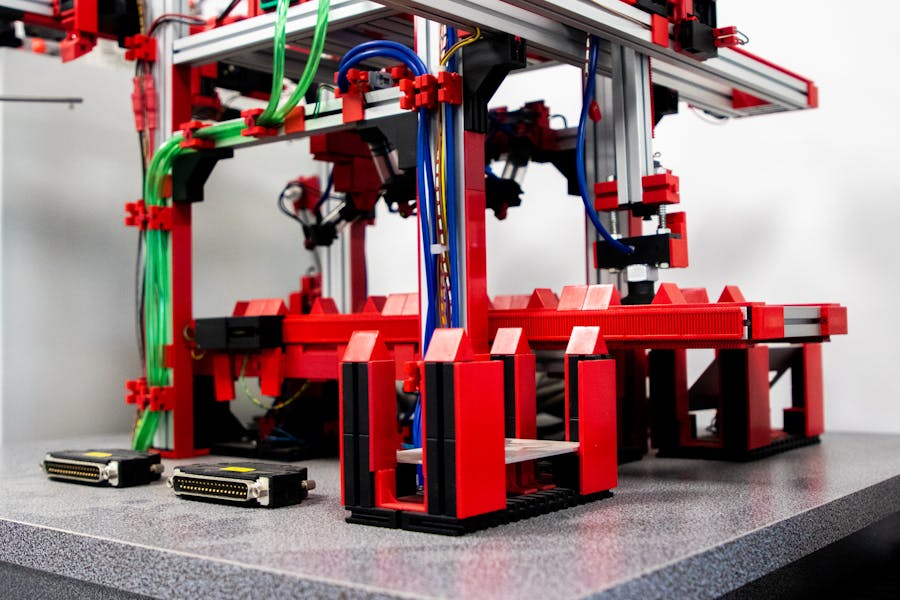Why Modern Staffing Firms Shouldn’t Ignore Mainframe Testing Automation

In an industry where speed, credibility, accuracy and customer satisfaction are of top priority, modern staffing firms cannot afford to lag behind in terms of technological advancements. Surprisingly, a big number of agencies still depend majorly on legacy mainframe systems to conduct vital backend operations, particularly those that work with government contracts, large corporations, and financial institutions. Business-critical apps and data are still run on mainframes by 67% of Fortune 100 companies. Even though these systems are still highly stable and reliable, their age presents unique testing complexities that often slow down the rate at which businesses can deploy software updates that are error-free and safe.
These complexities become more pronounced when organizations are under pressure to adhere to client-specific SLAs, offer consistent system uptime, and comply with strict regulatory demands. It is vital that mainframe systems function flawlessly in the existing competitive environment, where delays and mistakes can result in damaged reputation along with revenue loss. For this very reason, automating mainframe testing has become an operational demand rather than an added benefit of modernization. This blog explores the importance of automation for staffing firms and the considerable business advantages that can be achieved from using smart automation techniques.
Mainframes’ Continued Use in Staffing Firms
While they may seem outdated, mainframes are still vital for many staffing firms that handle huge transaction volumes, complicated data integrations, and workflows that are extensively dependent on compliance. Mainframes handle critical operations such as applicant tracking, payroll, benefits administration, and background checks, especially in domains like employment, banking, insurance, healthcare hiring, and government.
These systems provide unmatched computing power, reliability, and the ability to manage high volumes of sensitive data, often in real-time. Staffing firms that manage thousands of timesheets, invoices, or compliance reports every day, for example, discover that mainframes offer the power and data integrity promises that modern platforms may find it challenging to mimic.
Even though these systems are still helpful, there are still many hurdles to overcome when integrating them with modern apps, agile development, and cloud computing practices. Robust testing procedures are then vital to ensure smooth interoperability with most recent tech stacks as well as stability.
While these systems are stable, validating them can be quite complicated. Traditional manual mainframe testing is often time-consuming, labor intensive, and prone to human error, which hinders agility.
Important Reasons Why the Manual Mainframe Testing Falls Short
For small-scale web apps, manual testing might be efficient, but in mainframe settings, it soon becomes insufficient. Staffing firms that use manual steps to validate batch jobs, green-screen interfaces, or COBOL logic often face the below issues:
- Longer release cycles as a result of challenging test procedures.
- Inconsistent test coverage brought on by repetitive fatigue and human error.
- Higher operating costs as a result of needing additional QA resources.
- Delayed client or job candidate onboarding due to overlooked bugs or systems outages.
Additionally, test case execution and result validation are made even more complicated by the fact that mainframe systems often lack modern user interfaces. Each test cycle needs a lot of more time, skills, and expertise because testers have to wade through complicated command-line environments or text-based green screens. In fact, the largest obstacle to integrating mainframes into Agile and DevOps environments, according to 53% of application development managers, is the time needed for comprehensive testing. Also, these difficulties are made worse by incomplete documentation, lack of institutional knowledge, and legacy code.
Depending solely on manual testing leads to operational drag as user expectations for rapid turnaround times and smooth user experiences increases. It wastes critical human resources that could be better invested elsewhere, slows down development cycles, and contributes to the higher potential of production flaws.
The need for mainframe testing automation is undeniable in a world where every delay can result in losses for organizations.
Benefits of Mainframe Testing for Staffing Firms
Automation modifies outcomes for the staffing firms in the following ways:
Faster Release Cycles
Businesses can transition from weekly or monthly release schedules to continuous integration and delivery (CI/CD) with automated test suites, allowing faster bug fixes and updates. Adapting to client needs and regulatory changes needs this enhanced agility.
Higher Coverage and Accuracy
No matter how often systems are updated, automated testing makes it possible to thoroughly verify complicated workflows, ensuring that payroll calculations, job matching algorithms, background verifications, and compliance procedures all work flawlessly.
Scalability across Use Cases and Clients
High volume transactional settings are supported by mainframe automation, which makes it easier to roll out updates without running the risk of service interruptions or downtime, support seasonal hiring spikes, and onboard new enterprise clients.
Reduced QA Dependency
Low-code or no-code environments are fast becoming more and more prevalent in the modern testing platforms. These bring down the adoption barrier and more evenly distribute quality assurance responsibilities across teams by allowing non-technical team members to contribute to testing.
Cost Efficiency
Staffing firms’ bottom lines are directly affected when less time is used for manual testing because fewer resources are required to maintain quality. Avoiding costly production defects and ensuring high system uptime also results in long-term savings.
Choosing the Right Tools and Techniques
Staffing firms need tools that facilitate modern development pipelines and can be adaptable to legacy systems in order to fully realize the benefits of automation. Key functionalities to consider include:
- Support for batch jobs and green-screen interfaces.
- Integration with COBOL and other mainframe-specific technologies.
- Integration with CI/CD tools and pipelines.
- Low-code and no-code tools to reduce technical overhead.
The ideal solution should help cross-functional collaboration so that stakeholders, both non-technical and technical, can build, execute, and maintain test scenarios. Staffing firms can accelerate their modernization process without having to go through the trouble of completely rebuilding critical infrastructure by zeroing down on the right tools and integrating them with internal processes.
Modernization without Disruption
The possibility of disrupting mission-critical functions is one the biggest concerns that staffing firms have when updating mainframes processes. However, automation does not need the removal of existing systems. Rather, it functions as a bridge between legacy and innovation, enhancing the dependability of existing platforms while introducing modern agility into the development process.
Businesses can eliminate the need for extensive reengineering, support continuous system enhancements without downtime, and resolving vulnerabilities before they become serious bottlenecks by automating test steps. Without compromising essential systems, IT teams can respond swiftly to change requests, integration requirements, and legislative updates due to automated testing.
Organizations can decrease manual test cycles, eliminate regressions, and deploy CI/CD pipelines without having to modify their core systems by implementing automated mainframe testing, this helps innovation at scale and offers a smooth modernization experience, helping staffing firms to offer their clients with faster and more reliable service.
This mainframe testing blog explains the specifics of mainframe testing, including methods, resources and practical applications.
Conclusion
Automation of mainframe testing puts staffing firms in a long-term successful position. The advantages are tangible and quantifiable, whether they include faster hiring cycles, higher system dependability, or better adherence to client-specific SLAs.
Automation is scalable, accessible, and transformative; it is not just for the tech elite. The time has come to take active steps because many staffing workflows still depend heavily on legacy systems. Automation of mainframe testing is the present and not something of the future.
